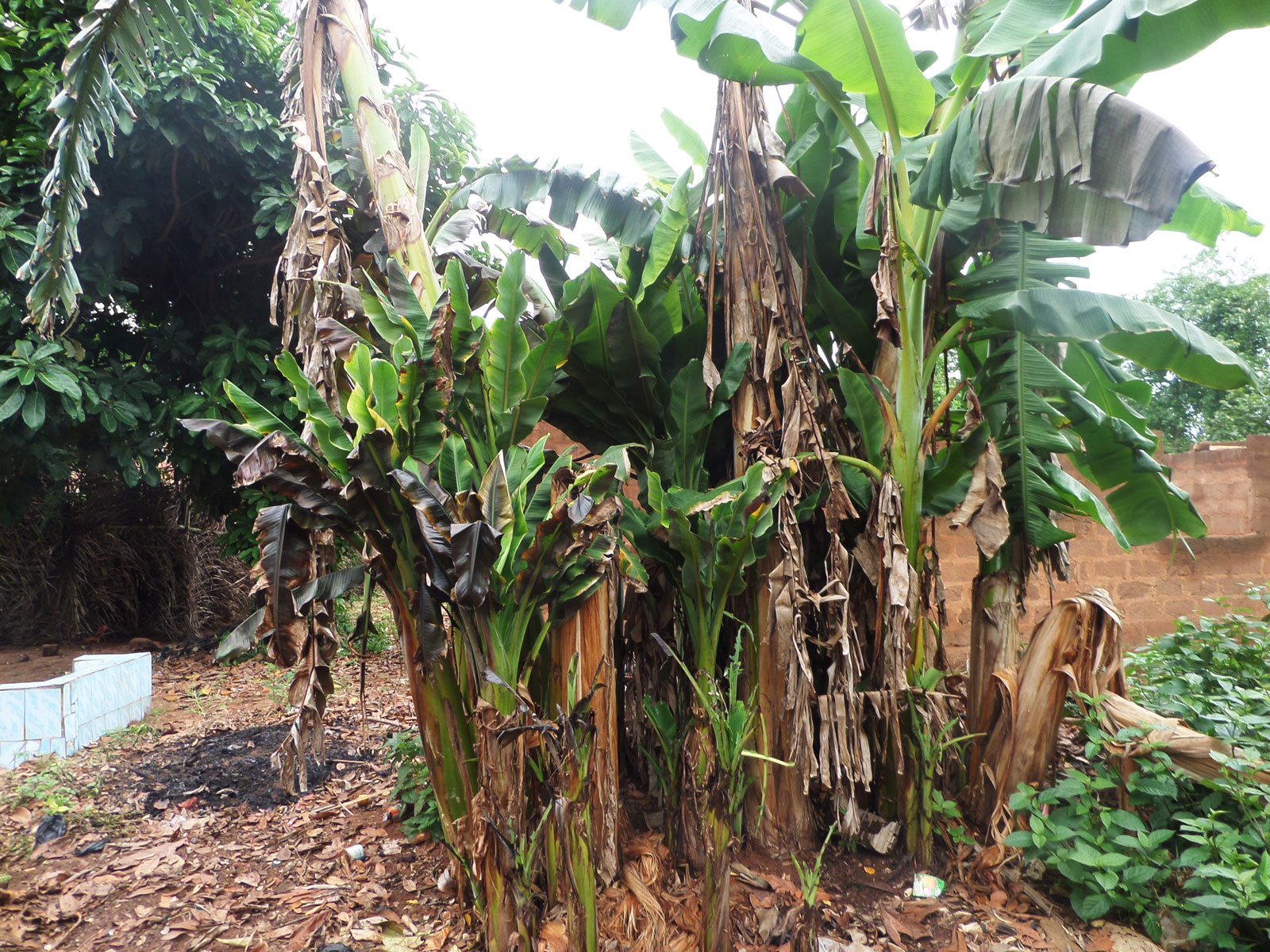The banana bunchy top virus (BBTV) has now spread to 16 African countries, threatening the livelihoods of 70 million banana farmers and imperiling the diversity of the varieties they grow. RTB has coordinated the Alliance for Banana Bunchy Top Disease (BBTD) Control in Africa. This unique initiative aligned international, multi-stakeholder teams to combat this dangerous disease. The BBTD Alliance has fostered cutting-edge research for development (R4D), established practical solutions so farmers can once again produce bananas for food and income. The Alliance has also helped to build capacity among national programs in the detection, surveillance, and control of BBTD.

The banana bunchy top disease (BBTD), caused by the banana bunchy top virus (BBTV), is spreading across sub-Saharan Africa. Since the disease was first reported in the Democratic Republic of the Congo (DRC) in the 1960s, the virus has invaded 16 countries, and it endangers a crop grown by 70 million households. The virus spreads through planting material and by an insect vector, the banana aphid. This disease stunts the plant which stops producing fruit. Sometimes all the fruit is lost in a single season. When BBTD strikes, the recommendation to farmers is to eliminate infected banana mats and replace them with healthy suckers. However, smallholders hesitate to destroy large parts of their banana gardens, especially if some of their plants are still bearing bunches.
Where BBTD strikes, it increases the demand for clean planting material while making it more difficult to find seed of local landraces. This threatens the diversity of well-adapted landraces.
There is a strong premium for collective action as farmers need to act together to prevent disease from spreading to their community and to prevent reinfection after replanting. Collective action also facilitates training, allows for peer support, information exchange and fidelity to control options.

Because BBTD can easily cross borders, management requires international cooperation. In 2011, RTB set up an interdisciplinary, multi-national Alliance for Banana Bunchy Top Disease Control in Africa, coordinated by IITA, the Alliance of Bioversity International and CIAT, with CIRAD and national research partners (Benin, Burundi, Cameroon, Congo Brazzaville, DRC, Ghana, Malawi, Nigeria, and Zambia), the FAO and the Inter-African Phytosanitary Council (IAPSC), and research partners from Australia (University of Queensland), Asia, Europe, India, Kenya, UK (University of Cambridge) and the USA.
The BBTD Alliance developed new knowledge and management technologies, while building capacity, and supporting national partners and farmer organizations. Ten graduate students conducted research on disease management and epidemiology, diagnostic tools, disease-resistant banana varieties, and remote surveillance with satellite and drone images. Seed entrepreneurs, extension agents, farmers and plant health inspectors were trained to diagnose the disease in the field, rogue infected plants and produce clean planting material. Trainees learned to recognize the early symptoms of BBTD, and to understand that the virus can only be stopped by eliminating diseased plants. The countries joined to contain the spread of BBTD across the continent, thanks in part to annual workshops for sharing knowledge and technologies.


The BBTD Alliance taught disease management at pilot sites, using farmer field schools (FFS) to collaborate with farmer experimenters. Consistent removal of diseased mats (roguing) based on early farmer-detectable disease symptoms was found effective in maintaining BBTD levels below 1% in Malawi, Benin and Burundi trials, and supporting the production of low-risk seed for expansion. Gender analysis shed light on power dynamics within the households and communities to ensure that women and men farmers benefited equitably from the FFS. Farmers learned to multiply clean seed and they were linked to tissue culture and other sources of healthy planting material. An experiment with farmers in seven countries showed that BBTD could be managed with timely rogueing to produce healthy planting material.
The early detection of BBTD when it spread to Togo, and the eradication of the virus there, is the first case for halting the spread of an invasive virus in sub-Saharan Africa. Demonstrations and hands-on training helped Togolese partners to eliminate the disease. Farmers, extension workers, policymakers, and donors saw firsthand how BBTD was managed in Benin, Cameroon, Malawi, and Nigeria. In 2020, RTB developed an online training course on disease recognition and eradication.
Studies examined the gendered access to information and resources in Benin, Cameroon and Nigeria. For example, in Cameroon, men had a greater say in decision-making over farm resources and information services, even when women were more involved in actual seed and site selection. Men also had greater access to clean seed than women. “Getting healthy planting material is crucial for managing bunchy top, and if women cannot access clean seed, they are at a disadvantage. Projects across Africa will have to ensure that women have equal access to healthy planting material,” says Lava Kumar of IITA.

SHARE THIS

